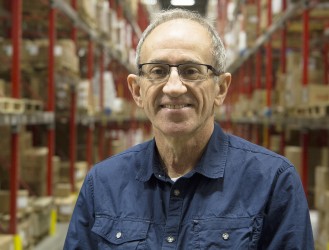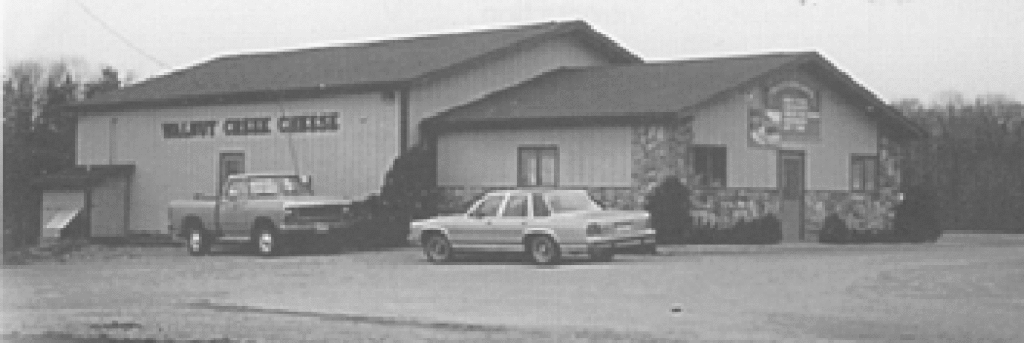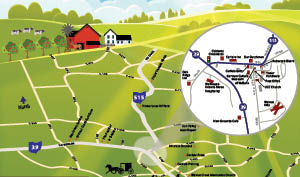The photos tell the story.
Photos of horses and buggies, teams of horses working the fields, and fields of wheat shocks along with windmills, rolling hills, and fall leaves. It’s what makes Walnut Creek a beautiful, and unique place. But our uniqueness does not come from our natural resources or geography; our uniqueness is our people.
Our people understand community. Our community dynamics find its roots in Amish and Mennonite culture, who define a neighbor as a person in need. The definition of a neighbor as someone who lives nearby only matters because that’s how we find out about each other’s needs. As we determine needs in others, they also determine our needs and community is formed.
Walnut Creek Cheese Developed Through Community
As I reflect on four decades in business, our community is the reason our company, Walnut Creek Foods, exists. It started with a simple mention from a cousin back in 1977, that a cheese route was for sale. I knew what a cheese route was: it was someone who picked up cheese at the local cheese factories and delivered them to retail stores outside our area.
I followed through on his information – it was not public knowledge – and the cheese route was not really for sale. The previous businessman had tried to run this business for a year and had given up, but when I came along, he answered my inquiry with “Sure, we can make a deal.”
With a handshake, I was in business. He introduced me to the stores he had been selling to and gave me a list of his vendors—all of them local cheese factories and Troyer’s Trail Bologna. Again, community was a factor as I went to these manufacturers. Most of them extended credit based on just meeting me and my promise to pay. A community doesn’t function without trust. They trusted me.
This same trust was extended to me as I started delivering to retailers in Northern Ohio. My customers knew our area, about our principles of hard work and honesty, and they responded in kind. They also showed me community and they wanted me to do well. One fellow, an semi-retired Italian meat cutter in Elyria, OH, took me, a 21-year-old Amish-Mennonite, under his wing. He offered business advice and touted me to his many meat-cutter friends. I gained numerous customers due to this relationship.
It was people like this, going beyond the requirements of business, that made the difference between failure and survival for my business. The manager at Der Dutchman Restaurant in Walnut Creek offered me space in his off-site cooler where I could store the product that I needed for the week. Without his help, it would take another month to get this business started, losing precious traction that would have been difficult to regain.
Business by The Golden Rule
Trust is extended, and community is formed when people live the Golden Rule—treating others the way I would like to be treated. To fully follow it, we seek the other person’s perspective, asking, “How would I like to be treated if I was them?”
The answer takes many different forms but it’s always an answer of respect. It’s respecting the other person’s opinion and responding accordingly. And this, is what makes our community special-- not perfect, but central to our relationships and business transactions is the principle of the Golden Rule.
I soon found out what this looks like on the cheese route. The first day I ran my route, a large farm market decided to purchase products from a competing distributor due to the lack of service he had received during the transition of the business. Undaunted, I stopped in every week for months, even though he only bought one item from me. But after 6 months he said, “You’ve earned my trust. I’m buying my cheese from you.” He was our largest customer for many years. I treated him the way I wanted to be treated even when his purchases were small.
We had local friendly competitors in the cheese distribution business and, as is bound to happen, they would run out of a critical product that our retailers needed before our next delivery came in. In those situations, we treated our friendly competitors with respect and charged them a minimal overage, so they could still profit from the item. When these distributors fell on financial difficulties, they picked us to acquire them. Through these acquisitions our business tripled in a 12-month span.
Rapid Growth in Retail and Manufacturing
Our retail stores started as an afterthought. We had outgrown the coolers I had on my Dad’s farm and we built a warehouse in Walnut Creek-- the building that is now New Grounds Café. We wanted to staff this facility full time to accept deliveries and serve retailers who wanted to pick up product. Our thought was, “If we’re going to be here full time we may as well open our warehouse to the public.”
The new retail store, called Walnut Creek Cheese, featured the items we were selling through our distribution, which naturally was what local people enjoyed eating. Our stores succeeded because we kept the needs of our local people at the forefront. It’s not surprising that the visitors to our area found these foods to also be enjoyable.
Our manufacturing division, Walnut Creek Foods, got it’s start through the acquisition of our friendly competitors. They were manufacturing fudge, jams and jellies and cheese spreads. Another vendor sold his meat snack business to us—Uncle Mikes beef jerky and beef sticks. In addition, our manufacturing division smokes cheese, produces cornmeal mush, pickled vegetables, and bakes cinnamon rolls and pizza crusts, employing 45 people.
The Face of Walnut Creek Cheese: The People
Our team members are the reason that we’ve been in business for 41 years, selling products to over 2,200 retailers in 17 states and to hundreds of thousands in our retail store. I like to say we hire folks who are smarter than me—and then we get out of their way.
It’s often said the customer is #1. I would never disagree with that statement. But another business principle, speaking to business managers, is equally true —"you will never be more to your customers than you are to your team members." Our experience has proven that true. Our 360 team members are the best part of our business and it’s up to me to make sure they are treated that way. They, in turn, treat others in the same manner, and community is created.
Submitted by Mark Coblentz, founder and owner of Walnut Creek Cheese & Walnut Creek Foods





